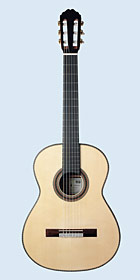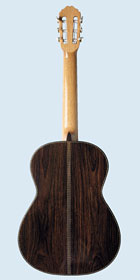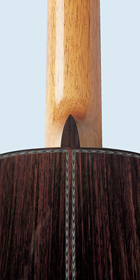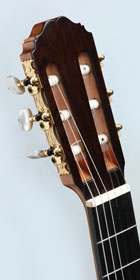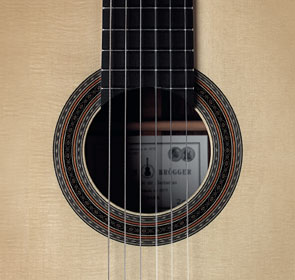
|
|
|||||||||||||||||||||||
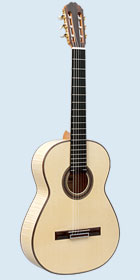 |
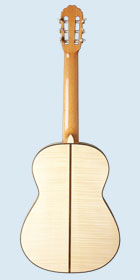 |
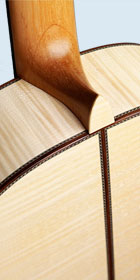 |
||
Click for larger image |
Click for larger image |
Click for larger image |
||
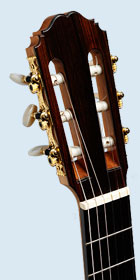 |
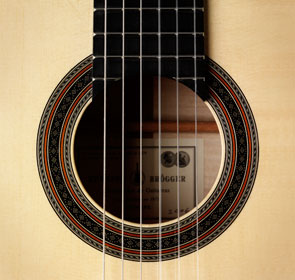 |
|||
Click for larger image |
Click for larger image
|
|||
“This guitar is made with stunning flamed maple back and sides, as well as the exceptionally high-quality spruce found on all Brögger guitars. Like many well-made maple guitars, the tone is softer and warmer than a rosewood guitar, and almost seems to glow. This beautiful guitar is ideal for intimate settings, although still powerful enough for concert situations. The guitar is reminiscent of the charming maple guitars of the early Madrid school, and is decorated with beautiful purfling and a perfectly executed rosette. The guitar is easy to play and has a very smooth neck with comfortable action. We recommend this builder highly”.
Tim Miklaucic and David Collett, Guitar Salon International USA.
|
|
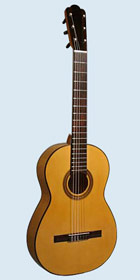 |
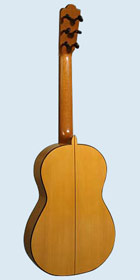 |
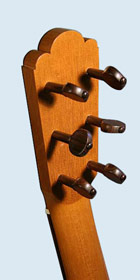 |
||
Click for larger image |
Click for larger image |
Click for larger image |
||
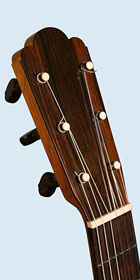 |
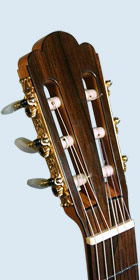 |
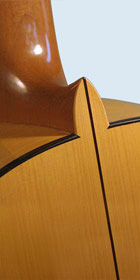 |
||
Click for larger image |
Click for larger image
| Click for larger image
|
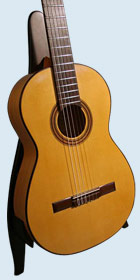 |
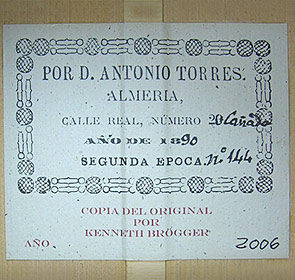 |
|
Click for larger image |
Click for larger image
|
Antonius Torres Jurado (1817-92), the father of the modern classical guitar – the Stradivarius of the guitar.
In around 1850, the Spanish guitar maker, Antonius Torres Jurado, developed the classical guitar into the model we essentially use today. He enlarged the resonance box and standardised the string length, increasing it from approx. 610 mm to approx. 650 mm. He also perfected the system of fan-bracing along the underside of the soundboard. This system was already well on its way to replacing the more primitive system consisting of a couple of tranverse bars.
During his life, Torres had two active periods of guitar-making. It was during these two periods that he made the majority of his instruments; from 1852 – 69 mainly in Seville and from 1875 – 92 in Almeria, both in Spain. During the second active period, Torres numbered his guitars on the maker’s label and added “Segunda Epoca” (SE) (second epoch). Instruments from this period are categorised by the letters “SE” followed by a number.
It is estimated that Torres built approximately 320 guitars in all and some 100 of these have been preserved. One of these guitars, no. SE 144 from 1890, belongs to Kenneth Brögger’s private collection of fine guitars. He has examined the instrument carefully and builds copies which, in every way (form, materials, inlay, all dimensions, varnish etc.), are as close to the original as possible, with wooden pegs (as on the original) and metal machineheads.
“This instrument is a near-exact reproduction of an original second-epoch Torres from 1890 in Brögger's personal collection of fine instruments. The dimensions, thicknesses of woods, proportions and aesthetic details of the original have been meticulously reproduced. The resulting guitar is in our opinion the finest and most authentic Torres copy we have ever seen. It is astonishing just how close this is to the original, not just in weight (1 gram difference) and appearance, but also in sound. Brögger has somehow captured the magic of Torres in a way we have never before seen”.
Tim Miklaucic and David Collett, Guitar Salon International USA.
